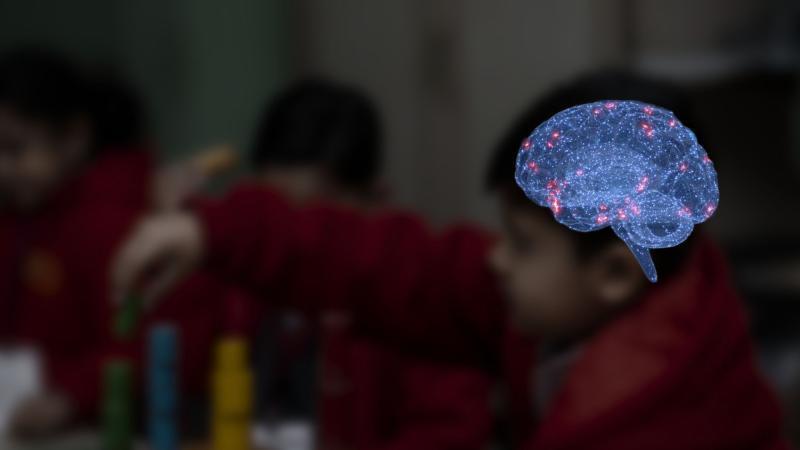
Decoding the Reward System of the Brain
The human brain is a complex and fascinating organ, capable of processing an astonishing amount of information every second. One of the most intriguing aspects of brain function is the reward system, which plays a crucial role in guiding our behavior, influencing our decisions, and shaping our perception of the world around us. Recent findings from the Indian Institute of Science have shed new light on the workings of the brain’s reward system, revealing distinct pathways for sensory attention and decision-making. In this blog post, we’ll delve into the intricacies of the brain’s reward system, exploring how expectation shapes what we see and do.
The Reward System: A Brief Overview
The reward system is a network of brain regions that work together to process rewards, punishments, and expectations. When we experience something pleasurable, such as eating a delicious meal or receiving a compliment, the reward system springs into action. This system is responsible for associating certain behaviors or stimuli with positive outcomes, motivating us to repeat those behaviors in the future.
Sensory Attention: Where to Focus
One of the key components of the reward system is sensory attention, which determines where we focus our attention. Research has shown that sensory attention is processed in the anterior cingulate cortex (ACC), an area of the brain responsible for error detection, conflict monitoring, and motivation. When we expect a reward, the ACC becomes activated, guiding our attention towards the source of the reward.
For example, imagine you’re waiting for a surprise gift from a friend. As you wait, you’re constantly checking your phone for messages or looking around the room for a package. This is an example of sensory attention in action, as your brain is focusing its attention on the potential source of the reward.
Decision-Making: What to Choose
The other critical component of the reward system is decision-making, which determines what we choose to do. Decision-making is processed in the ventromedial prefrontal cortex (VMPFC), an area of the brain responsible for evaluating the value of different options and making choices.
When we’re faced with a decision, the VMPFC weighs the potential rewards and costs of each option, guiding our choice towards the most beneficial outcome. For instance, when deciding whether to take a job offer, the VMPFC would evaluate the potential rewards (e.g., salary, benefits, career advancement) against the potential costs (e.g., commuting time, new social environment).
Separation of Pathways
One of the most significant findings from the Indian Institute of Science is the separation of sensory attention and decision-making pathways in the brain. This separation allows us to understand how incentives guide our perception and actions, providing a clearer picture of the brain’s complex motivational systems.
In other words, the brain processes sensory attention and decision-making through distinct pathways, allowing us to focus our attention on the potential source of a reward while also evaluating the value of different options. This separation enables us to make more informed decisions and adjust our behavior accordingly.
Expectation Shapes Perception and Action
The brain’s reward system is highly influenced by expectation, which plays a critical role in shaping our perception and action. When we expect a reward, our brain is more likely to focus its attention on the potential source of that reward, and we’re more likely to choose options that align with our expectations.
For instance, if you’re expecting a promotion at work, you’re more likely to focus your attention on the skills and qualities required for the role, and you’re more likely to choose options that align with those requirements. Conversely, if you’re expecting a punishment, your brain may become more vigilant, focusing its attention on potential threats and avoiding options that might lead to negative outcomes.
Implications and Applications
The findings from the Indian Institute of Science have significant implications for our understanding of the brain’s reward system and its role in guiding our behavior. By recognizing the distinct pathways for sensory attention and decision-making, we can better understand how incentives shape our perception and action.
This knowledge can be applied in a variety of fields, including:
- Marketing: By understanding how incentives guide our perception and action, marketers can design more effective campaigns that capture our attention and influence our decisions.
- Education: By recognizing how expectation shapes our learning, educators can create more engaging and effective learning experiences that motivate students to learn.
- Clinical Psychology: By understanding the neural mechanisms underlying reward processing, clinicians can develop more effective treatments for mental health disorders such as addiction and depression.
Conclusion
The brain’s reward system is a complex and fascinating process that plays a critical role in guiding our behavior, influencing our decisions, and shaping our perception of the world around us. By decoding the reward system’s distinct pathways for sensory attention and decision-making, we can gain a deeper understanding of how incentives shape our perception and action.
As we continue to explore the intricacies of the brain’s reward system, we may uncover new insights and applications that can improve our lives and well-being. Whether in marketing, education, or clinical psychology, understanding the brain’s reward system can lead to more effective and engaging strategies that motivate us to achieve our goals.
News Source:
https://researchmatters.in/news/brains-reward-system-how-expectation-shapes-what-we-see-and-do






